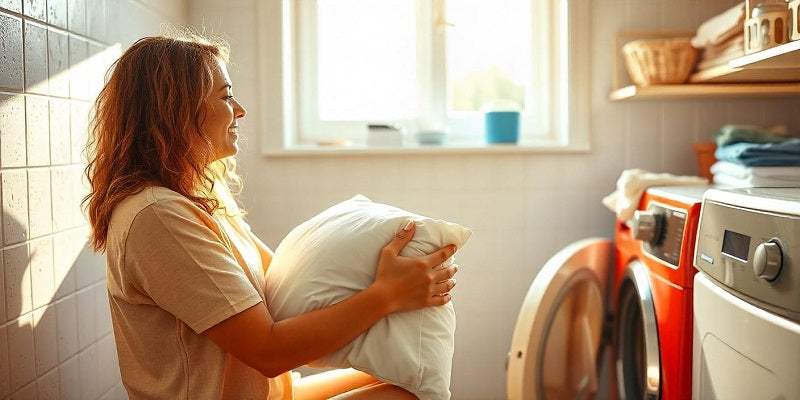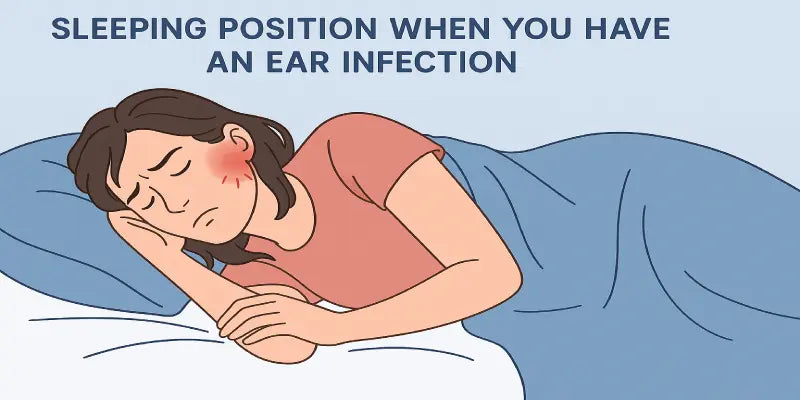
How to Wash Pillows the Right Way
When it comes to bedding, you're obviously careful about cleaning your sheets and comforter, but what about washing your pillows? Dead skin and dust mites may build up on and inside your pillows, so treat them with the same care as anything else on your bed. Before you toss them in the washing machine, let’s understand what is the proper way to wash pillows to make sure they come out fresh and clean every time.
How to Clean Pillows
Here are some tips for washing and caring for pillows:
Read the Care Label
Make sure you carefully read the labels on your pillow before putting it in the washer. The type of material your pillow is made of will determine how to wash it; some materials require special handling to prevent damage during cleaning.
Gather Your Supplies
You’ll need:
- Mild detergent
- Bleach (if applicable)
- Washing machine (or basin for hand washing)
- Dryer (or clothesline)
- Tennis balls (for drying)
Prepare the Pillows
Remove the pillowcases and pillow protectors, if any, and give them a separate wash. Then, gently fluff the pillows to distribute the filling evenly.
Washing Machine Method
Most pillows, such as those filled with cotton, feathers, down, and fiberfill, can be washed in a machine with warm water on a gentle cycle. You can follow these steps to machine wash your pillows:
- Take off the pillow covers or cases from the pillows.
- Apply a tiny bit of natural detergent to the stained areas as a pre-treatment.
- To keep your balance while washing, put two pillows in the washer.
- Fill the detergent dispenser with 1/2 cup white vinegar and natural detergent.
- Select a mild (or delicate) cycle. To keep the filler from clumping, use cold water.
- Take the pillows out of the washing machine after washing, then carefully squeeze out any extra water.
- To help the pillows retain their form and fluff, place a few tennis balls or dryer balls inside the dryer with the pillows.
- To avoid damaging the filler, use a low heat setting when drying.
- After the pillows are totally dry, take them out of the machine. Check the pillows occasionally while they're drying.
- To help the pillows regain their shape after drying, fluff them up.
Hand Washing Method
Some pillows, such as latex and memory foam, should only be hand-cleaned instead of thrown in the washing machine. The impact is too intense and is likely to mess with the cushioning. You can follow these steps for pillows that needs hand washing:
- Take off the pillow covers or cases from the pillows.
- Pour enough warm water into a sanitized bathtub or sink to completely submerge the pillows.
- To the water, add a tiny amount of natural detergent and then half a cup of white vinegar.
- After agitating the water to incorporate the detergent, submerge the pillows in it.
- Gently squeeze and push pillows, paying attention to any dirty spots. Apply a gentle bristle brush to clean specific areas.
- After emptying the water, add fresh water to the basin.
- Make sure you rinse the pillows well enough to remove all of the detergent.
- Gently squeeze out any extra water from the pillows after washing. Do not twist or wring.
- Place freshly laundered towels on a level surface, like a drying rack or tabletop.
- For the most even drying, turn the pillows every so often while they're drying.
Drying Process
Regardless of the washing method used, drying is crucial:
- Place the pillows in the dryer with a couple of tennis balls to help fluff them up.
- Use a low heat setting to avoid damaging the filling.
- Check the pillows periodically to ensure they are drying evenly.
- Alternatively, you can hang the pillows outside on a clothesline to air dry. Make sure they are fully dry before bringing them back indoors.
Final Touches
Once the pillows are dry, give them a good fluff to restore their shape and loftiness. Then, cover them with clean pillowcases and pillow protectors for added hygiene.
Also Read:- best direction to sleep
Maintenance Tips:In between cleanings, use the following advice to keep your pillows fresh.
- To protect your pillows from bacteria, skin cells, and other debris, use pillowcases.
- To get rid of smells, occasionally let your pillows air out.
- Do not eat in bed and don’t let pets on the bed or pillows.
- When you're unwell, wash or replace your pillowcases.
- Pillows should be kept in a cool, dry area when not in use.
When to Replace
Even with regular cleaning, pillows eventually wear out:
- If your pillows have become lumpy, flat, or misshapen.
- Pillows that no longer provide adequate support or comfort.
- A general rule of thumb is to replace pillows every 1-2 years, depending on their quality and usage.
Pillow Recommendations
With so many pillow options available in the market, it could be overwhelming to choose a pillow for yourself. The two most popular and affordable options these days are Memory Foam Pillow and Microfiber Pillow. Each of these have their unique benefits and can help you sleep better and faster.
Conclusion
Pillow washing may seem like a boring task, but it's important for keeping a clean and healthy sleeping space. These few methods will guarantee that your pillows remain fluffy, new, and unbelievably comfy for many years to come. So go ahead, treat those pillows with the care they require and savor a peaceful sleep each and every night!








